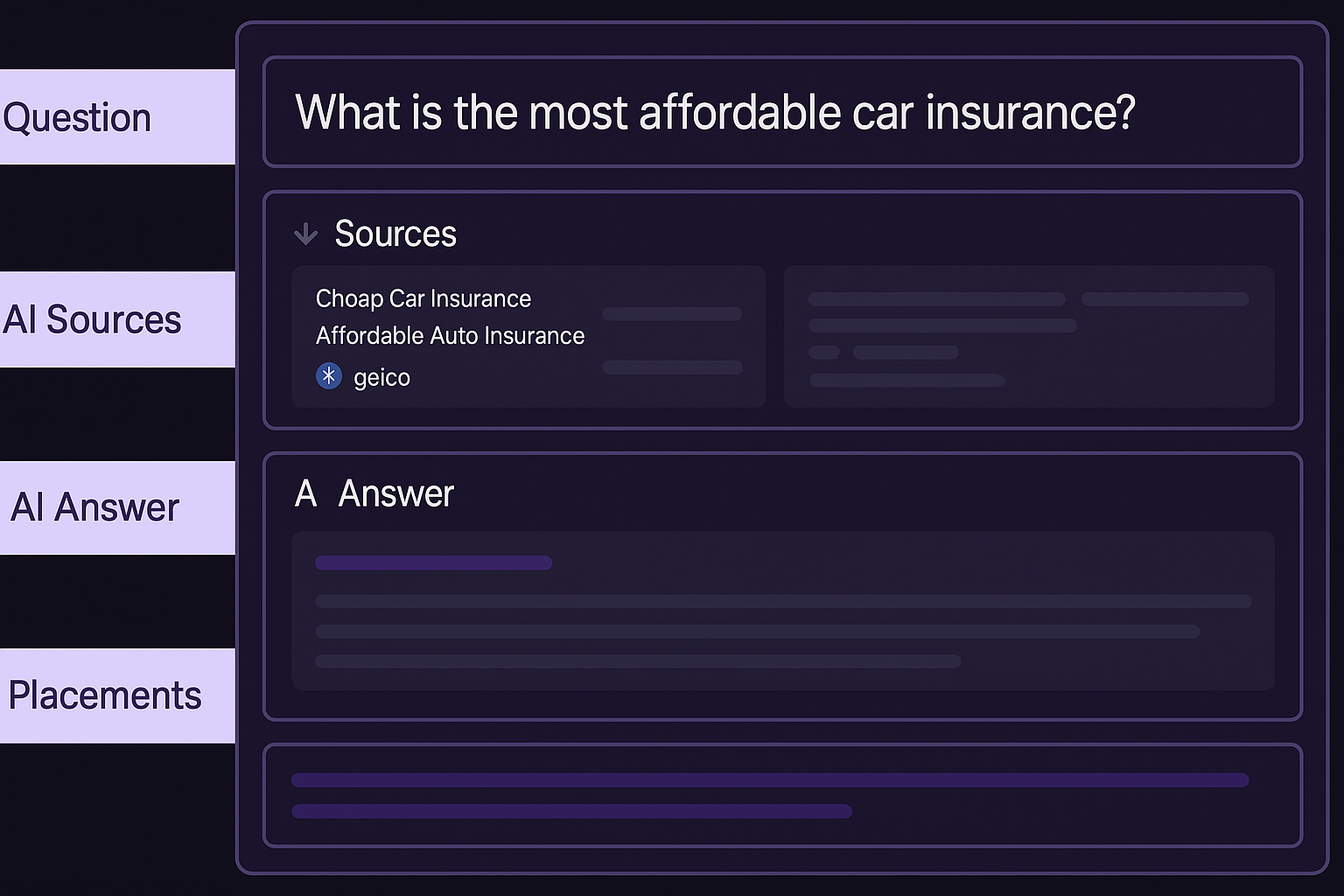 |
Just like traditional SEO helps your website show up on Google or Bing, Generative SEO helps your brand appear in answers given by AI tools like ChatGPT. Gemini.
As more people start using these AI tools to search for information, businesses are starting to wonder how to keep up. If you're one of them, don’t worry—keep reading to find out how Generative Engine Optimization (GEO) can help your brand stand out and stay ahead of the competition!
What is Generative Engine Optimization (GEO)?
Generative Engine Optimization, or GEO, is about making your brand more visible in answers from AI tools like ChatGPT, Claude, or Perplexity.
Many brands have already worked hard to be seen on Google, but showing up in AI-generated responses is a whole new game—with new challenges and new chances to reach more people.
For example, imagine you're Bose or Sony, and people are asking ChatGPT, “What are the best noise-cancelling headphones for video editing?” You’d want your products to be mentioned in the answer.
When an AI tool includes your brand in its response or lists your site as a source, it’s like being at the top of a Google search result—but for the world of AI.
How is GEO different from SEO?
With traditional SEO, you have many chances to show up in Google search results. There’s usually a list of links—often ten or more—so your brand has multiple ways to be seen by people searching online.
But with Generative Engine Optimization (GEO), it’s different. AI tools like ChatGPT don’t show a list of links. Instead, they scan the internet and give one personalized answer to the user’s question. That answer might only mention a few sources or brands.
This means you have fewer chances to be included in the AI’s response—so it’s more competitive.
While GEO and SEO share some strategies, GEO is like a new kind of search engine where the goal is to get your brand into the AI’s final answer.
How Generative Engine Optimization Works
You might be wondering, “Is it possible for my brand to show up in AI-generated answers?”
Good news—yes, it is! As an experienced SEO company, we’ve seen how search keeps evolving, and we’re always ready to adapt. Generative Engine Optimization (GEO) is one of the latest ways brands can get noticed, and it’s a strategy you can definitely start using.
Here’s how it works!
1. How to Show Up in Generative AI Results
If you want your brand to appear in answers from AI tools like ChatGPT, here are three key steps to follow:
Create High-Quality, Well-Organized Content
AI tools look for expert-level content that clearly answers people’s questions. If your content is vague, low quality, or just written to fill space, it probably won’t make the cut—AI has access to tons of information and can easily spot poor content.
So what works?
Break your content into sections using headings. Start with an outline to organize your thoughts. If your site has very structured content (like product pages), consider using schema markup to help AI understand it even better.
If you’ve done SEO before, this should sound familiar—just like Google rewards high-quality, trustworthy content (think EEAT), AI tools do too.
2. Be Clear and Answer Questions Directly
Most people ask AI tools questions—so write your content like you’re answering them.
Think of it like an FAQ: Ask a question, then give a clear, direct answer right after.
AI tools work well in a question-and-answer format. When you give them a ready-made answer, it increases your chances of being included in their response.
This is similar to how traditional SEO works with featured snippets (those short answers you see at the top of some Google searches).
3. Build Your Brand Across the Web
AI doesn’t just look at your website—it pulls info from across the internet. If your brand is mentioned on trusted sites (like Yelp, G2, or industry blogs), it’s more likely to be included in AI answers.
Try this: Ask ChatGPT a question related to your industry. Look at which websites or sources it uses in the answer. If you’re not listed there, work to get your brand featured on those pages.
Any time you see phrases like “According to…”—that’s a clue. You want your brand to be the one AI tools refer to in those moments.
Benefits of GEO
If the tips above sound a lot like SEO, that’s because they are! GEO uses the same foundation—but with a sharper focus.
One big advantage of optimizing for Generative Engine Optimization (GEO) is that it naturally supports your SEO efforts too. In fact, when you work on GEO, you’re also improving your SEO at the same time.
Over the last 20 years, Google has changed a lot. But one thing has stayed the same: it rewards high-quality content that answers people’s questions and comes from trusted sources.
That’s exactly what GEO is all about—it’s like SEO, but taken to the next level to meet the needs of today’s AI-driven search.
Boost Your Brand’s Visibility with GEO
Search is changing fast—and that means new opportunities for your brand to get noticed. We’re excited to see businesses using smart strategies to stay visible, and Generative SEO (GEO) is one of the best new ways to do that.
If you’re not sure where to start, our AI marketing agency is here to help. We’ve spent years helping clients succeed online, and since the launch of ChatGPT, we’ve developed a proven approach to getting brands featured in AI-generated answers.











If you have any question, please email me at durgtech@gmail.com